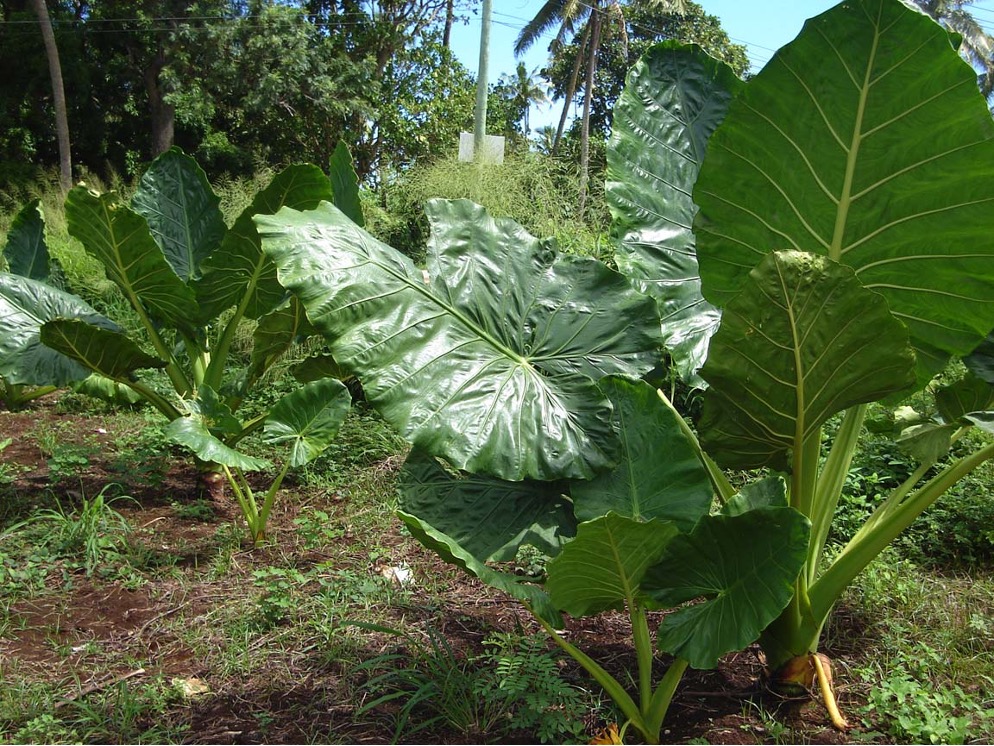ʻApe

Names
- ʻŌlelo Hawaiʻi: ʻApe
- Scientific: Alocasia macrorrhizos
Species Information
This is a glabrous (smooth), terrestrial herb that can grow up to about 16 ft (Manner, 2011). Leaves are arranged in a rosette with flattened blades and are broadly sagittate (shaped like an arrowhead). They grow upward, which is partly what makes them so tall. The fruit is a fleshy, rounded berry that is red when mature (Wagner et al., 1999).
Similar to taro, the underground stem and corm is edible but is only safe to eat after breaking down its calcium oxalate crystals. However, this is considered a famine food. The meat of the corm is also used to treat burns and broken skin. ‘Ape leaves can be used as a wrap to induce sweating for fever reduction (Abbott, 1992).
Distribution
ʻApe is native to southern Asia. It is currently widely distributed and naturalized in many tropical and subtropical regions in North, Central and South America, the West Indies, tropical Africa and the Indo-Pacific Islands (Wagner et al., 1999).
Habitat
Occurs mostly in low-elevation mesic valleys, along streams or other types of wet sites (Wagner et al., 1999).
Photos

Tauʻolunga, CC BY-SA 2.5 <https://creativecommons.org/licenses/by-sa/2.5>, via Wikimedia Commons
References & Additional Resources
- Abbott, Isabella Aiona. Lā’au Hawai’i : Traditional Hawaiian Uses of Plants. Bishop Museum Press, 1992.
- Manner, H. I. “Farm and forestry production and marketing profile for giant taro (Alocasia macrorrhiza).” Specialty crops for pacific island agroforestry [Internet]. Holualoa, Hawaii: Permanent Agriculture Resources (PAR) (2011).
- Wagner WL, Herbst DR, Sohmer SH. Manual of the flowering plants of Hawaii. Revised edition. Honolulu, Hawaii, USA: University of Hawaii Press/Bishop Museum Press, 1999.
